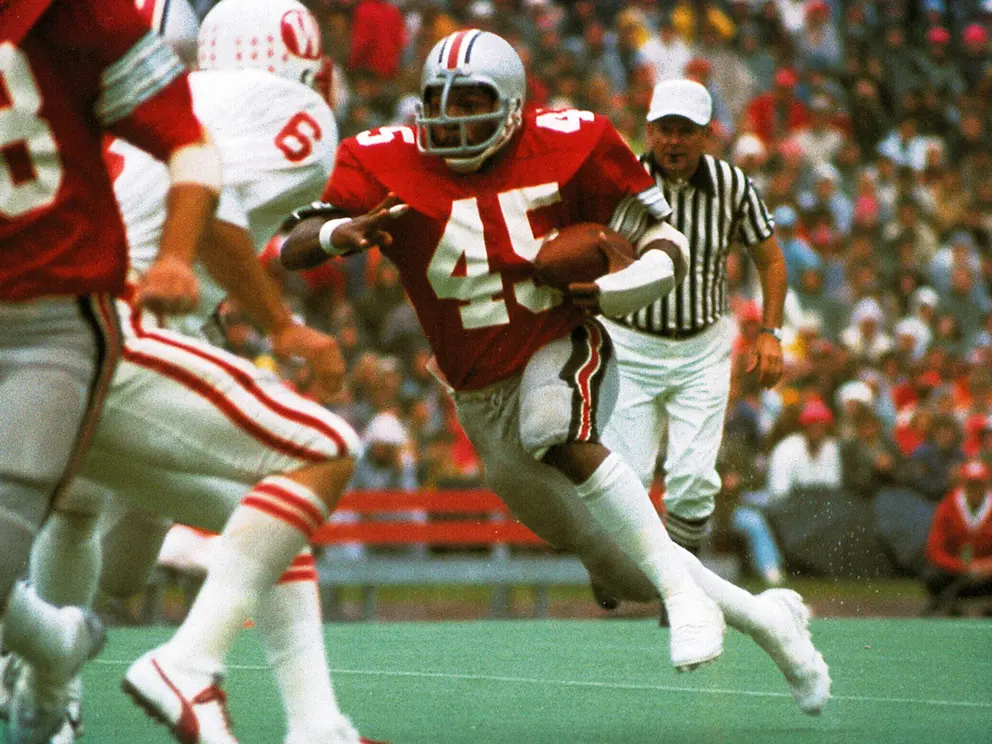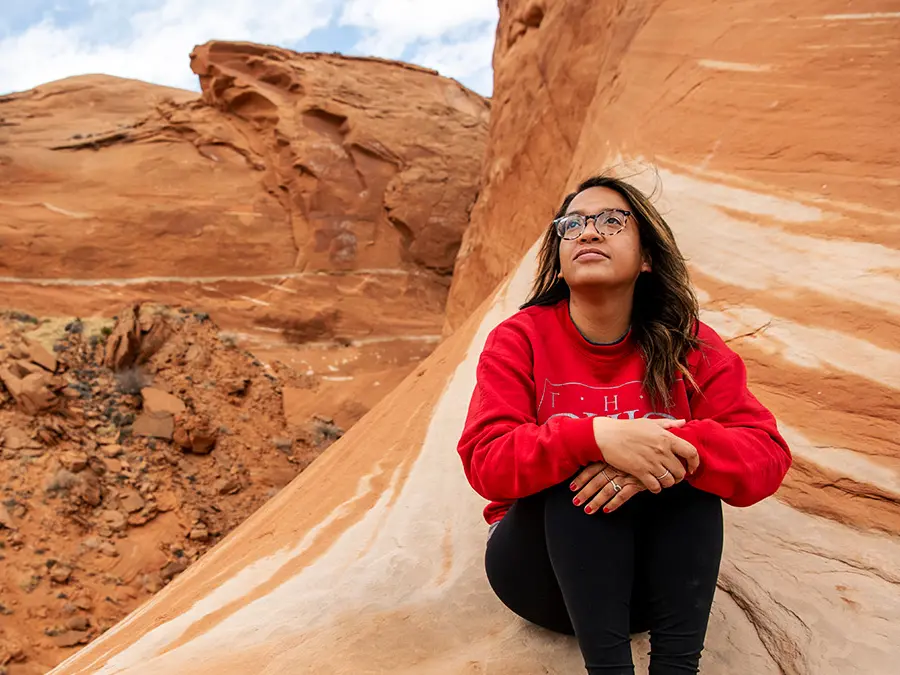Letters to the editor: Alumni share ’Shoe stories
Readers respond to articles our magazine published about Ohio Stadium’s centennial and Dr. Christina Knight’s work in Navajo Nation in this collection of commentary.
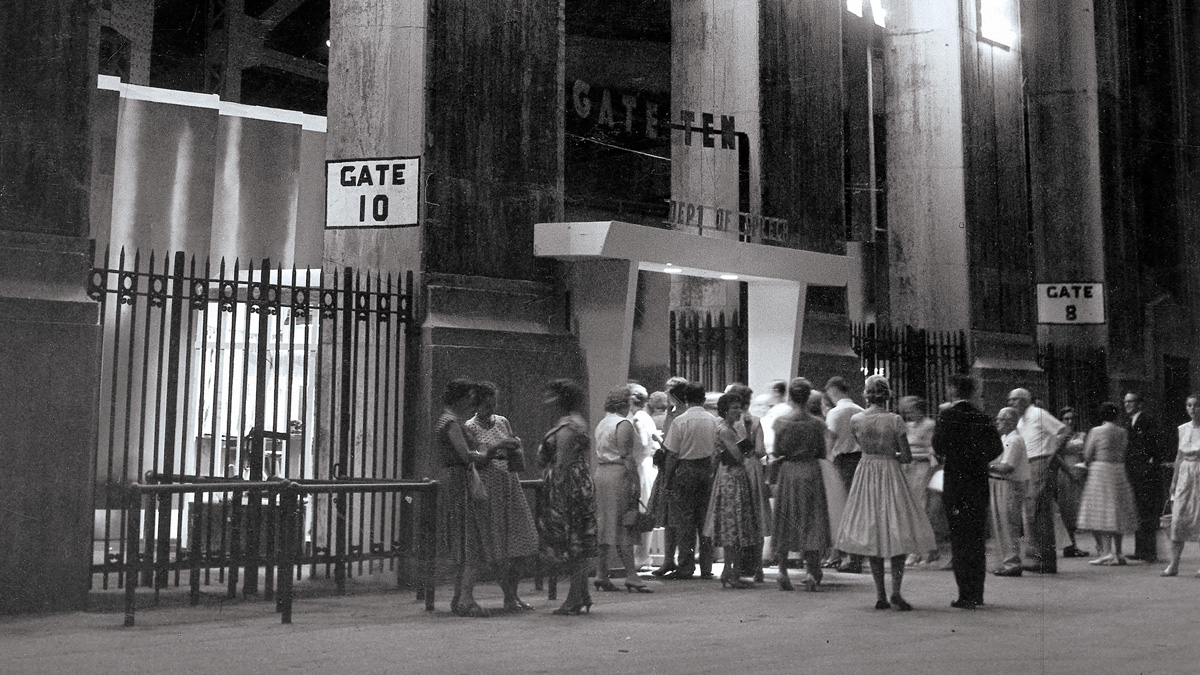
’Shoe drama of another sort
I enjoyed the fall issue articles on Ohio Stadium. But they neglected one unique aspect of the ’Shoe: It is the only football stadium in the country — maybe the world? — that included a theatre!
In 1950, there was a growing interest in an outdoor summer theatre at Ohio State. John McDowell, director of theatre in the Department of Speech, asked himself what was indigenous to the university and the community, plus distinctly Columbus. The answer: Ohio Stadium! The university gave McDowell, assisted by Professor Roy Bowen, permission to use the concourse under B-deck at Gate 10 to create a summer theatre.
In July 1950, Stadium Theatre opened and became well-known as one of the early arena theatres. Stadium Theatre was a town-gown operation, combining the talents of faculty and students with those of local actors. Each year in June, the theatre was built from scratch using scenic elements and lighting equipment from Derby Hall Theatre. It typically presented two musicals and four plays during the season. At the end of the season, the entire theatre was dismantled to clear the concourse for football season.
Stadium Theatre ran for 19 sold-out seasons. It ceased operations after the 1968 season, although the name Stadium II was used for a theatre in Drake Union a few years later. That theatre eventually was renamed Roy Bowen Theatre.
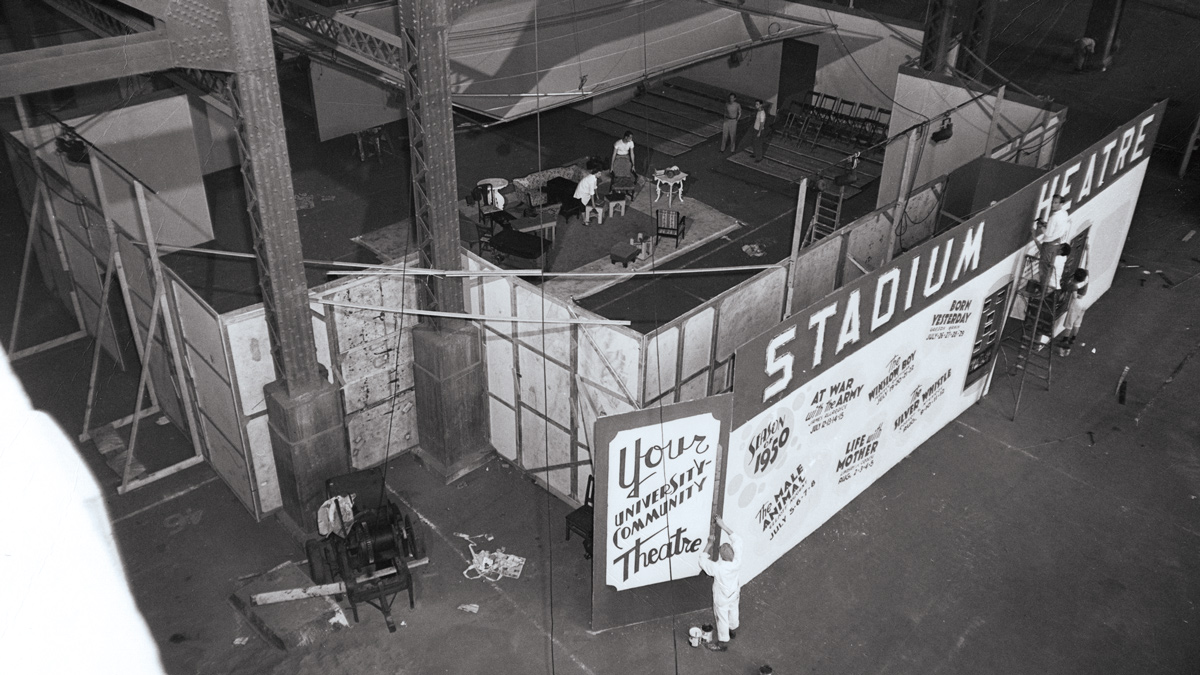
These memories are dear to me. I entered Ohio State as an engineering physics major in 1955, and as a junior, I was talked into going to auditions with a friend. I was cast in two plays, one in University Hall Chapel and one in Derby Hall Theatre. A year later, I became a theatre major. My three Ohio State degrees are in theatre, production design and theatre history, respectively.
When I was a graduate student in 1966, I met my future wife, Claudia Grossman Mohler ’67, backstage during the operetta “La Périchole” at Mershon Auditorium. I proposed to her in the theatre graduate assistant office in Derby Hall Theatre a couple years later. We both performed and designed at Stadium Theatre and were on staff during the final summer season in 1968.
Those experiences inspired my career as a professor of theatre. In addition to teaching, I designed sets and/or lighting for more than 250 productions before retiring as professor emeritus at Appalachian State University in 2004.
Frank Mohler ’65, ’69 MA, ’76 PhD
Boone, North Carolina
That magnetic Ohio Stadium
I enjoyed reading the fall issue story on Howard Dwight Smith as I reminisced about the many Saturday afternoons I made the journey with thousands of other students, as though pulled like a magnet through the campus, to that wonderful structure. Thank you, Mr. Smith. I am glad to know about you and proud to be a fellow alum.
Pat Toms Doyle ’60
Palm City, Florida
Kudos for the research
The fall story on architect and 1907 graduate Howard Dwight Smith was very well written. I learned so much and have a greater appreciation of my alma mater as a result of this article. Thank you, Tom Reed, for the research that went into writing this piece!
Ronald B. Arenstein ’76 OD
Fort Myers, Florida
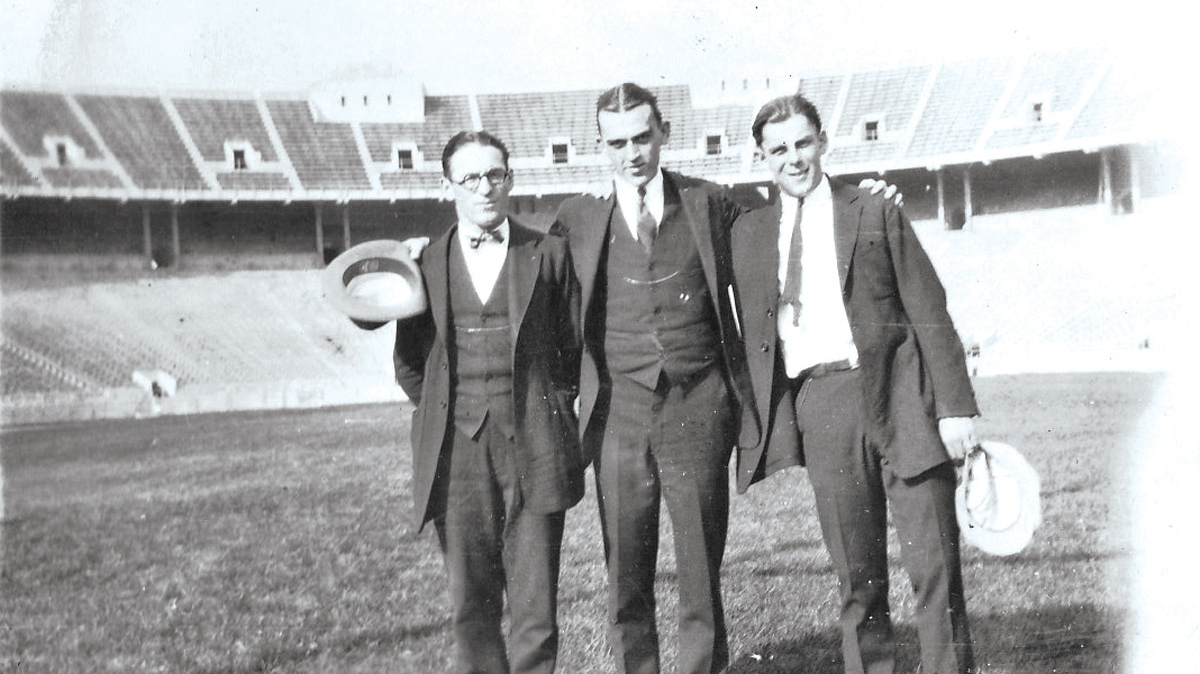
Foltz family’s milestones inseparable from ’Shoe
As we celebrate Ohio Stadium’s 100th anniversary, I reflect on my relationship with the stadium and its importance to people near and dear to me. As a graduating senior at Ohio State in 1979, I shared the commencement stage in the ’Shoe with then-Vice President Walter Mondale. I spoke as a representative of the senior class, presenting our class gift, a bus for mobility-impaired students and faculty. A two-time graduate of Ohio State, I am now a faculty member in the College of Food, Agricultural, and Environmental Sciences.
My maternal grandfather, James Lawrence Clark ’23, was a highly decorated Marine veteran who had been wounded in the Battle of Belleau Wood in France in 1918. At the dedication of Ohio Stadium on October 21, 1922, he placed a wreath to honor service veterans who lost their lives in World War I. A treasured family photo shows my paternal grandfather, Ralph Monroe Foltz ’29, ’36 MS, posing with some college chums in Ohio Stadium in 1926.
My father, John Charles Foltz ’55, ’71 MS, lived in the Stadium Dorm his freshman year. My mom, Anne Clark Foltz ’55, ’79 MS, and I graduated together in the ’Shoe in 1979, and my wife, Barbara Elizabeth Haffner Foltz ’80, graduated the next year. In 1981, my sister Mary Beth Foltz Arensberg ’81, ’93 PhD and I received our diplomas together. At that commencement, Mary Beth was one of the speakers, as her role was to present the senior class gift of benches for the Mirror Lake area.
How firm thy friendship, O-HI-O!
John Foltz ’79, ’81 MS
Dublin, Ohio
Thank you, TBDBITL
I grew up within earshot of the ’Shoe and attended Columbus North High School. Choosing brass instruments over string, I auditioned for and made TBDBITL in 1969 as a music student.
Jack Evans and Paul Droste made me a brass player! I graduated in ’72 and marched my last game, the Rose Bowl, in January 1973 as Q Row squad leader.
These influences enabled my long career in music as a university band conductor and Air Force Band commander and conductor. High musical standards, a rigorous work ethic and a strong sense of serving others — these qualities were born in me at Ohio State and in TBDBITL!
Retired Air Force Lt. Col. Philip Carl Chevallard ’72
Oceanside, California
Hats off to Archie
Great article on Archie Griffin in the fall issue. Like Archie, I went to Eastmoor High, and Archie was a living legend. I remember him coming back to an assembly at which he strongly advocated for a college degree and the need to further our education past high school. His family was a force of nature, and I continue to be proud of their accomplishments and their dedication to our alma mater.
Valerie Sorkin-Wells ’79
Scottsdale, Arizona
Behind the scenes of a ’68 reno
The fall 2022 issue highlighting the Ohio Stadium anniversary brought several thoughts to mind.
In 1968, I was a structural engineer for a consulting engineering firm Ohio State hired to study the condition of the stadium, which was soon to be 50 years old. I authored that study. As we got started, one of the first things we asked university staff about was their current maintenance plan for the structure. Their practice, they said, was to check the undersides of the seating areas and use long poles to knock off loose concrete. You may think I’m kidding, but that was the extent of the plan.
During our study, we meticulously examined the structural elements of the stadium and made a number of recommendations. Concrete samples from the seating and other areas were taken and tested. We found the concrete was low strength and not air-entrained, and as a result, moisture penetration was causing the steel framing below to corrode.
Per our recommendations, some flat slabs in the aisles and deteriorated seating areas were replaced. Most importantly, a protective coating was applied to the exposed inferior concrete surfaces that were structural in nature. This was done over a number of years and probably saved the stadium from a wholesale concrete replacement. This is the gray surface coating you see in the stadium today.
There was substantial rusting of the steel supporting girders, in some areas greater than an inch thick. In some cases, it appeared much worse than it really was: Steel corrosion produces rust approximately eight times the thickness of what is essentially lost. Word of the rust damage was quickly elevated to university leaders, who wanted to ensure the stadium was safe for football games. This all happened during the summer of 1969, with an opening game not far off. After much discussion, it was decided to load test a portion of the stadium. Seating benches were removed from an area of C deck and large steel barrels were filled with water to simulate the weight of fans. The stadium passed the test because, while damaged, it had a large degree of redundancy that provided safety.
Also of interest to me was the story on Ohio Stadium architect Howard Dwight Smith. My wife, Kathleen, was a nurse and worked at the university hospital while I was attending graduate school. In those days, the hospital had “ward secretaries” who handled clerical duties. The ward secretary on Kathleen’s floor was Mary Edith Gramlich Smith, Howard Dwight Smith’s second wife. Mary and Kathleen became friends, and Mary began to send us Christmas cards. They were not ordinary cards; they featured reproductions of Howard’s sketches of buildings and other places. Mary continued to send us cards even after she retired. We still have about 10 of these.
And finally, you mentioned Dan Milosevich in the story about Smith. I was a friend of Dan’s and did structural engineering work for him for several years. I was fortunate to visit with him in August on the day before he died. Dan’s firm, Trautwein & Milosevich, served as architects for the iconic Jai Alai restaurant, formerly on Olentangy River Road. For many years, it was a favorite choice for people from the university and beyond. It was one of Woody Hayes’ top dining destinations, and it was common to see him there.
J. Thomas Jones ’65 MS
Columbus
Applause for John Wilce
I enjoyed reading “Imagining an icon,” in the fall issue. However, I am surprised and more than a little dismayed that in the section “Leaders Who Made It Happen,” John Wilce is conspicuously absent.
Coach Wilce, a member of the Ohio State Athletics and College Football halls of fame, was the head football coach at Ohio State from 1913 to 1928. In fact, the success of Coach Wilce’s teams was a key factor in generating the support needed for the new stadium.
The extraordinary Dr. Wilce also was a medical doctor, a professor in Ohio State’s College of Medicine and director of student health services. The Wilce Student Health Center on the Columbus campus is named in his honor.
Andrew McCarthy ’75
Kenilworth, Illinois
Editor’s note: Thank you for noting this oversight. While we had to skip many Ohio Stadium tales due to space constraints, we should have recognized Wilce, who was 25 when he joined Ohio State in 1913 as football coach and physical education professor. He led the Buckeyes for 16 seasons, earning three Big Ten championships along with national attention. In those early years, coaching All-American Chic Harley and leading the Buckeyes to their new home in Ohio Stadium were highlights. Wilce gave up his coaching role in 1928 and returned to the university nine months later as a physician with the Student Medical Service. He became director in 1935 and continued in that role until retiring in 1958.
Those were some days
Congratulations on the magnificent tribute to the ’Shoe at 100. I know it captures feelings and memories for many Buckeyes!
My mom and dad were there for the 1922 dedication game, when Dad was a sophomore electrical engineering student. In 1939, he took me to my first football game, the homecoming contest against Illinois. I was 8. And in 1940, I was there for the 40–0 loss to Michigan when “Old 98,” Heisman Trophy winner Tom Harmon, and the rest of the Wolverines prevailed.
I was a Boy Scout usher in high school from 1944 to 1947. My first on-field thrills were as a junior and senior member of the Ohio State Fair Band in high school, followed by my years with The Ohio State University Marching Band from 1948 through 1952 and most of the reunions through 2009. The memories rush in!
Chuck Van Cleve ’52
Palm Desert, California
Cover for the Snow Bowl
In November of 1950, I was president of Floriculture Forum, an organization of students majoring in floriculture within the College of Agriculture. Our main fundraising effort was to make chrysanthemum corsages the night before every home football game and sell them at the stadium.
On November 25, the day of our famous Snow Bowl game against Michigan, as the storm developed and sales evaporated with every snowflake, two of us decided to give up the effort and make our way to our seats. We brought with us a large, heavy cardboard box that had earlier been filled with corsages. It was a perfect protective cover from the snow and lasted, albeit somewhat soggy, until the end of the game.
I didn’t realize that my future wife, Margaret Anne Lucas ’53, also was at that game. We would meet several months later.
Richard Zoerb ’51
Nashua, New Hampshire

Art worth admiring
I really enjoyed your recent stories on the 100th anniversary of the stadium. Learning about the history of the stadium and its construction was very enlightening, particularly the section “The Crucial Choices that Set Ohio Stadium Apart.”
I was disappointed, however, that the article did not make any mention or have any pictures of the iconic stained-glass windows that adorn the Rotunda. Truly this is something that sets Ohio Stadium apart, and although they are fairly recent additions to the ’Shoe, they are unique and give a special feel to this “sports cathedral.”
Lana Sakash ’97 MSW
Hillsboro, Ohio
Editor’s note: We appreciate the opportunity to circle back about these windows. They were added in 2001 as part of a major Ohio Stadium renovation project. The panels measure 12 by 18 feet and weigh 2,000 pounds each. The artwork features a Block O in the center, flanked by offensive and defensive players on either side. They were designed by Eyethink of Powell, Ohio, and created by stained glass artist Tom Cullen. The best time to catch them: when they’re illuminated at night.
As Bob Hope would say …
Thank you for the fall issue. It brought back many fond memories, especially of Ohio Stadium. I first went there with my dad to watch football games in the mid-1950s while in junior high school. I ran track there at the state high school track meets in the late 1950s.
I lived there in the Stadium Scholarship Dorm as an undergraduate for four years from 1960 to 1964. As a resident, I remember watching TBDBITL practice every fall outside our window and playing basketball under the stands. I could leave my room in Unit M at 1 p.m. and get in my seat at 1:10 p.m. as TBDBITL came down the ramp for the pregame. Then the football game would start at 1:30, as this was before most games were on TV. I recall many of the fellows who lived there (the Stadium Scholarship Dorm was all male then) and much more, but this is enough for now.
I also enjoyed the articles about Dr. Christina Knight, the Global Water Institute and Navajo Nation, as they reminded me of my years as a Peace Corps volunteer and a missionary in Africa. The article on Dr. Katie Seeley was interesting, as I have seen her many times on the “Secrets of the Zoo” TV show on National Geographic Wild. Finally, I thank Irene Hatsu for answering my question, “What is a healthy diet for the elderly?”
As Bob Hope often sang, “Thanks for the memories.”
C. Arthur Mehaffey ’64, ’70 MA
Dayton, Ohio
A little scrap of scarlet
“8 treasures from the ’Shoe‘s first 100 years” brought back a memory from my first year at Ohio State. I commuted and parked next to the stadium. Walking to my car one day, I saw the stadium was open and they were tearing out all of the fake turf. I saw a few students inside, so went in and was able to cut out a piece of the red “O” from the end zone as a souvenir. I wonder if that piece of the scarlet is still in my parents’ basement in Columbus!
Dirk Williams ’94
Brea, California

Read the story // Listen to the story
Doctor’s story offers hope
Your fall issue story and photos of Dr. Christina Knight ’13, ’17 MD were very inspiring. It gives me hope for the future of commitment and compassion to help and understand underserved peoples. At present, that seems to be waning in the United States.
William Betzhold ’71 DDS
Richmond, Virginia
Inspiring to this parent
Thanks for the great story on Christina Knight. It was truly uplifting to read about something good and healing in these times when all the news seems to be about anger and division. I have an adopted son, and I hope he is inspired by Dr. Knight to build a wonderful life of helping others. If I can support her work in my small way, I am happy to do so.
David Gonsalvez ’83 MS, ’86 PhD
Kuala Lumpur, Malaysia
Positive stories uplift
I love hearing such positive stories of people giving back to community and others in need.
Peggy Kearney ’15
Pickerington, Ohio
Curious to learn more
The Dr. Christina Knight story would have been an even more interesting and informative article if it had given more outcomes to clinical examples. I’m very glad the author included Dr. Knight’s interventions to make sure that the elder had his family around him as he died; very effective.
I would be interested in hearing what Dr. Knight decides about her next professional step. I’m aware of some physicians who served in other rural, underserved areas and decided not to extend their stay. No matter what, I’m glad to know of Dr. Knight, her work and the stress that she managed as she did the work.
I’m appreciating the new website and the articles, plus the print publication that comes to my home address. Thank you! I have contributed to some projects, especially in the mental health area, and am glad to see these receive visibility.
Judith Siehl ’76
Seattle, Washington
Story elicits pride
Awesome story on Dr. Christina Knight. It makes me proud to be a Buckeye!
Rich Moore
San Mateo, California
Spirit of service applauded
Thank you for sharing Dr. Knight’s inspiring and moving story of courage, advocacy and a compelling spirit of service that is truly monumental!
Susan Bon ’92 JD, ’94 MA, ’96 PhD
Columbia, South Carolina
This tall tale was true
I remember General Shondel’s name as wing commander during my sophomore year in Air Force ROTC. [Read the story: A brigadier general shares his medals.] I had the same experiences he did throughout my four years of AFROTC, except my floor scrubbing at summer camp occurred at the former Lockbourne Air Force Base, now Rickenbacker International Airport, near Columbus.
One interesting experience I had was a C-47 trip for Category 1P (pilot) students from Lockbourne up to Bunker Hill Air Force Base (later named Grissom Air Force Base) in Indiana. The start of the trip was delayed because of an electrical problem in one of the two engines, and I remember that all of us cadets stood around on the tarmac in our parachutes, which the Air Force required for anyone flying in aircraft with two or fewer engines.
Meanwhile, the crew, which included two of our regular Air Force ROTC pilots, “fixed” the problem. We cadets were joking that they put pennies in the electrical fuses on the problem engine. After our bus trip around Bunker Hill, we returned to the plane to come back to Columbus.
As soon as the first engine was started, it burst into flames, and because we students had a better view of the engines than our pilots did, we had to get their attention, and the “bail out” bell was sounded. We all proceeded out the back door of the aircraft as the fire was being extinguished. Another check of the problem was accomplished, and we boarded and returned to Lockbourne.
The bottom line was that we could all tell our fellow cadets we had to bail out of a C-47 in parachutes (even though we were still on the ground at the time)!
Richard Gilgrist ’68
Petoskey, Michigan

In a totally unscientific study, we analyzed answers from 360 graduates to find out which 10 challenging courses were the most-cited.
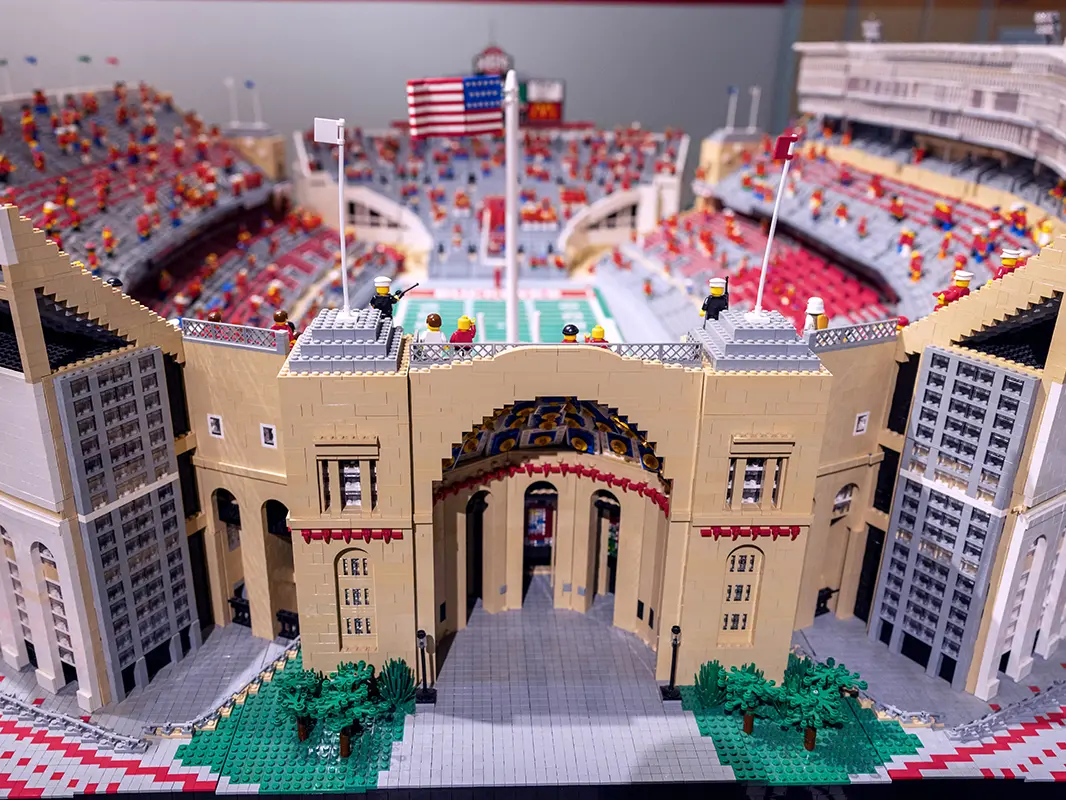
Paul Janssen spent more than 1,000 hours crafting the marvelous model, which is now being used to support good causes.

A wise grandmother passed down these passions to Tina Pierce and her son, an Undergraduate Student Government leader.

